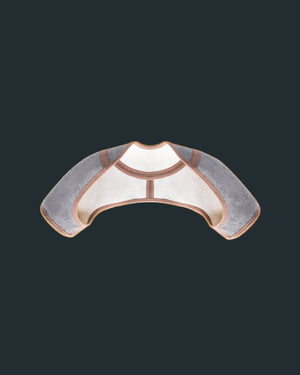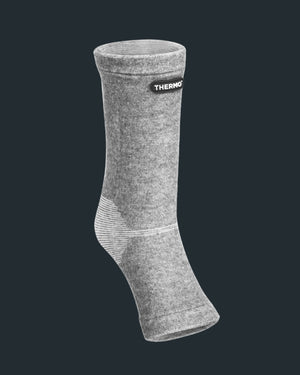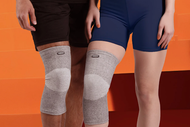Unlock the secrets to efficient healing. Our guide provides insightful recovery pointers for daily workouts, fitness, sports, and medical scenarios.
We often hear the phrase, "Preparation is key." While this holds true in various aspects of life, it's significantly emphasized in sports. An often overlooked but equally crucial element is recovery. In sports and fitness, recovery pointers are essential tools to aid in the restoration and rebuilding of our bodies.
Recovery isn't about idleness or doing nothing after a rigorous workout or game. It’s about smartly allowing the body to recuperate, mend, and strengthen itself. This article explores the importance of recovery pointers, particularly how they positively affect sports performance and general wellbeing.
Understanding Recovery Pointers
Recovery pointers are the guiding principles and strategies aimed at helping individuals recover from physical exertion, a medical procedure, or even a state of substance abuse. Regardless of the context, these pointers serve a common purpose: to optimize the process of healing and restoration.
While achieving our goals, whether breaking a personal record in a marathon or successfully rehabilitating post-surgery, pushing ourselves is often the primary focus. The same goes for the recovery process. It helps us replenish energy, repair muscle tissue, and reduce the risk of injuries. Without adequate recovery, sustained progress is virtually impossible.
Game on: Recovery Pointers for Different Sports
Whether you're a professional athlete or a weekend warrior, incorporating specific recovery pointers tailored to your sport is not merely an option—it's a must to ensure longevity and performance in your athletic journey.
Endurance Sports
Endurance sports, also referred to as aerobic or cardio sports, are characterized by prolonged periods of physical activity that primarily use the aerobic energy-generating process. They require sustained, repetitive muscle movements, taxing the cardiovascular system and challenging the athlete's stamina and resilience over extended time frames.
Examples of Endurance Sports and Workouts:
- Swimming
- Cycling
- Marathon-racing
- Skiing
- Running
- Speed Skating
Recovery Pointer: Consume high-quality carbohydrates and proteins post-exercise to help restore glycogen levels and repair muscle damage.
High-Impact Sports
These sports are activities that involve substantial physical contact, strenuous movements, or heavy strain on the body and joints. They place a significant degree of stress on the body, particularly on joints like the knees, ankles, and hips. Also, they demand excellent strength, agility, and coordination from athletes.
Key characteristics of high-impact sports include rapid acceleration and deceleration, jumping, colliding with other players, and often unpredictable, dynamic movements.
Examples of High-impact Sports and Workouts:
- Football
- Rugby
- Soccer
- Boxing
- Basketball
- Hockey
- Gymnastics
Recovery Pointer: Spend time in regular massages or foam rolling to aid in relieving muscle soreness and enhance mobility.
Precision Sports
These sports encompass activities in which success is primarily determined by the accuracy and precision of specific movements rather than physical strength or endurance.
While these sports may seem less physically demanding than endurance or high-impact sports, they require significant mental effort and fine motor control. As precision sports often demand repetitive, specific movements, they can lead to overuse injuries or muscle imbalances.
Examples of Precision Sports and Workouts:
- Archery
- Golf
- Billiards
- Dards
- Recreational Hunting
- Bowling
Recovery Pointer: Practice mindfulness exercises and adequate rest to aid mental recovery and better focus.
Low-Impact Sports
Low-impact sports refer to activities that place minimal stress on the joints and the body's skeletal system while still offering an effective workout.
They are generally friendly on the joints and ideal for those with bone or joint concerns, those recovering from an injury, or people who simply prefer a workout with less strain on the body.
Examples of Low-Impact Sports and Workouts:
- Rowing
- Pilates
- Yoga
- Walking
Recovery Pointer: Engage in targeted strengthening exercises such as resistance band workouts or weightlifting, along with flexibility-enhancing stretches like yoga or Pilates to effectively address potential muscular imbalances and facilitate optimal recovery.
Recovery Pointers: Fitness Perspective
From seasoned athletes to individuals simply incorporating exercise into a healthy lifestyle, everyone can benefit from understanding and implementing essential fitness recovery pointers to ensure a safe, effective, and enjoyable fitness journey.
Importance of Hydration
Water plays a vital role in numerous body functions, including regulating body temperature and lubricating joints. Staying hydrated helps efficiently transport nutrients within the body, which is particularly necessary for muscle recovery.
Nutrition and Recovery
A balanced intake of protein, carbohydrates, and healthy fats enhances recovery by replenishing energy stores and facilitating muscle repair.
Here are food staples recommended by experts to help with recovery:
- Lean Protein Sources: Chicken, turkey, fish, eggs, tofu, and Greek yogurt.
- Carbohydrate-rich foods: Quinoa, brown rice, sweet potatoes, bananas, and oats.
- Healthy Fats: Avocados, nuts, seeds, and olive oil.
- Fruits and Vegetables: Berries, cherries, spinach, and broccoli, which provide essential vitamins and antioxidants.
- Hydrating Foods: Watermelon, cucumbers, and oranges, which can help replenish fluids.
- Omega-3 Rich Foods: Salmon, chia seeds, and walnuts are known for their anti-inflammatory properties.
- Dairy and Alternatives: Milk, cheese, and plant-based milk options for calcium and protein.
- Protein Bars and Shakes: Convenient options for quick post-workout nutrition.
Just remember that dietary intake varies depending on your needed recovery. Working with a skilled nutritionist or physician will help you create a meal plan fit for your lifestyle.
Post-Workout Stretching
Regular post-workout stretching aids in reducing muscle tension and increasing flexibility, which are vital in preventing injuries. This leads to improved muscle balance around joints, thus enhancing overall movement efficiency.
For instance, after a solid leg workout, you can relieve muscle tightness using:
- Hamstring stretches (like a seated or standing "reach for your toes" stretch)
- Quadriceps stretches (pulling your foot towards your buttock while standing)
- Calf stretches (leaning against a wall with one leg extended backward)
In the long term, post-workout stretching can help prevent injuries, promote better posture, and enhance athletic performance. It increases your range of motion over time, which allows you to get more out of your exercise routines.
Quality Sleep
During sleep, the body enters a restorative state where it repairs damaged muscle and tissue, replaces aging or dead cells, and consolidates memory.
For example, growth hormones, which aid tissue growth and repair, are primarily released during deep sleep. This hormone supports restoring muscles worn down during the day's activities or workouts. Meanwhile, the lack of sleep can lead to increased levels of cortisol, a stress hormone, which can impede recovery and impair performance.
From an athlete’s perspective, sleep’s benefits mean:
- Enhanced Performance: Adequate sleep can improve speed, accuracy, alertness, and overall performance in athletes.
- Increased Energy Levels: Quality sleep helps restore energy reserves, ensuring athletes are ready for the day's training or competition.
- Improved Muscle Repair and Growth: During sleep, the body releases growth hormones that aid tissue growth and repair, crucial for muscle recovery.
- Reduced Injury Risk: Sufficient sleep contributes to a lower risk of fatigue-related injuries.
- Improved Mental Wellbeing: Quality sleep can enhance mood, reduce stress, and improve focus and concentration, which are vital for athletes.
- Boost in Immune Function: Adequate sleep supports the immune system, helping athletes stay healthy and ready for physical demands.
- Optimized Metabolic Function: Sleep has been linked to maintaining a healthy metabolism, aiding athletic performance and recovery.
Following Your Doctor's Instructions
Always adhere to your doctor's advice, from medication schedules to specific activity restrictions, to ensure optimal healing. Your doctor provides you with critical directions that are vital to your recovery process. They will guide you on the proper usage and dosage of any prescribed medication, which is necessary for effectively managing pain, preventing infections, or assisting in healing.
In addition, they will establish activity guidelines, advising you on what activities to avoid and what exercises to include in your routine to aid your recovery without risking further injury. This includes using support gears like elbow sleeves to minimize pressure on your injured elbow. Dietary recommendations may also be given to support your recovery and bolster your overall health.
Doctors will schedule regular follow-up appointments. These checkups serve as a platform for your doctor to monitor your recovery progress and make necessary adjustments to your treatment plan when required.
Following these directions is not only essential for your physical recovery but also beneficial for your mental wellbeing.
Rehabilitation and Physical Therapy
Engage in prescribed exercises or rehabilitation programs to improve mobility and restore function.
Rehabilitation and physical therapy are cornerstone elements of the recovery process, particularly following surgery, injury, or any condition that impairs physical function. These specialized programs restore strength, flexibility, mobility, and overall functional ability.
For example, someone recovering from knee surgery might work with a physical therapist on exercises to strengthen the surrounding muscles, improve joint flexibility, and enhance balance and coordination.
Similarly, an individual recovering from a stroke might engage in rehab therapy to regain control over their motor skills, speech, and daily activities.
Specific benefits of rehabilitation and physical therapy include:
- Speed Up Recovery: Structured exercises can accelerate healing by increasing blood flow to the injured areas, reducing inflammation, and promoting tissue repair.
- Improves Functionality: Therapy can help restore normal movement patterns and enhance the ability to perform daily tasks independently.
- Prevents Further Injury: Physical therapy can reduce the risk of future injuries by strengthening muscles and improving body mechanics.
- Reduces Pain: Specific therapeutic exercises and techniques can alleviate pain and discomfort associated with the injury or condition.
- Improves Quality of Life: By enhancing physical function and independence, rehabilitation, and physical therapy can significantly improve an individual's quality of life.
Preparing Yourself Mentally for Recovery
The recovery process can be challenging and taxing not only physically but also mentally and emotionally. It may involve pain, discomfort, or reduced mobility and can take time.
Mental preparation helps maintain a positive outlook, patience, and persistence throughout the recovery. It fosters resilience and adaptability in the face of setbacks. A positive mindset also enhances the body's ability to heal and improve adherence to rehabilitation programs.
Here are a few basic and easy-to-follow techniques to prepare yourself mentally:
- Set Realistic Expectations: Understand that recovery may take time and there could be setbacks.
- Goal Setting: Establish short-term and long-term goals that are specific, measurable, achievable, realistic, and timed.
- Develop a Positive Mindset: Practice optimism, patience, and perseverance. Try to see each step, no matter how small, as progress.
- Use Visualization Techniques: Visualize the recovery process and positive outcomes to help motivate and prepare yourself for the journey.
- Practice Relaxation Techniques: Utilize techniques such as deep breathing, mindfulness, or meditation to manage stress and promote mental wellbeing.
- Seek Professional Advice: Talk to healthcare professionals about your concerns. They can provide valuable advice and alleviate any fears or doubts.
- Stay Informed: Understand and pay close attention to your treatment plan to reduce anxiety and feel more in control.
- Seek Social Support: Share your feelings and concerns with a loved one or family. Consider joining a support group of individuals going through similar experiences.
Conclusion
Recovery is a critical component of any journey, whether it's sports, medical rehabilitation, or overcoming substance abuse. By following these recovery pointers, you're promoting physical healing and nurturing a sustainable sense of wellbeing.
You are in control of your recovery journey. Embrace it, be patient, use high-quality recovery gear, and celebrate every step forward.





